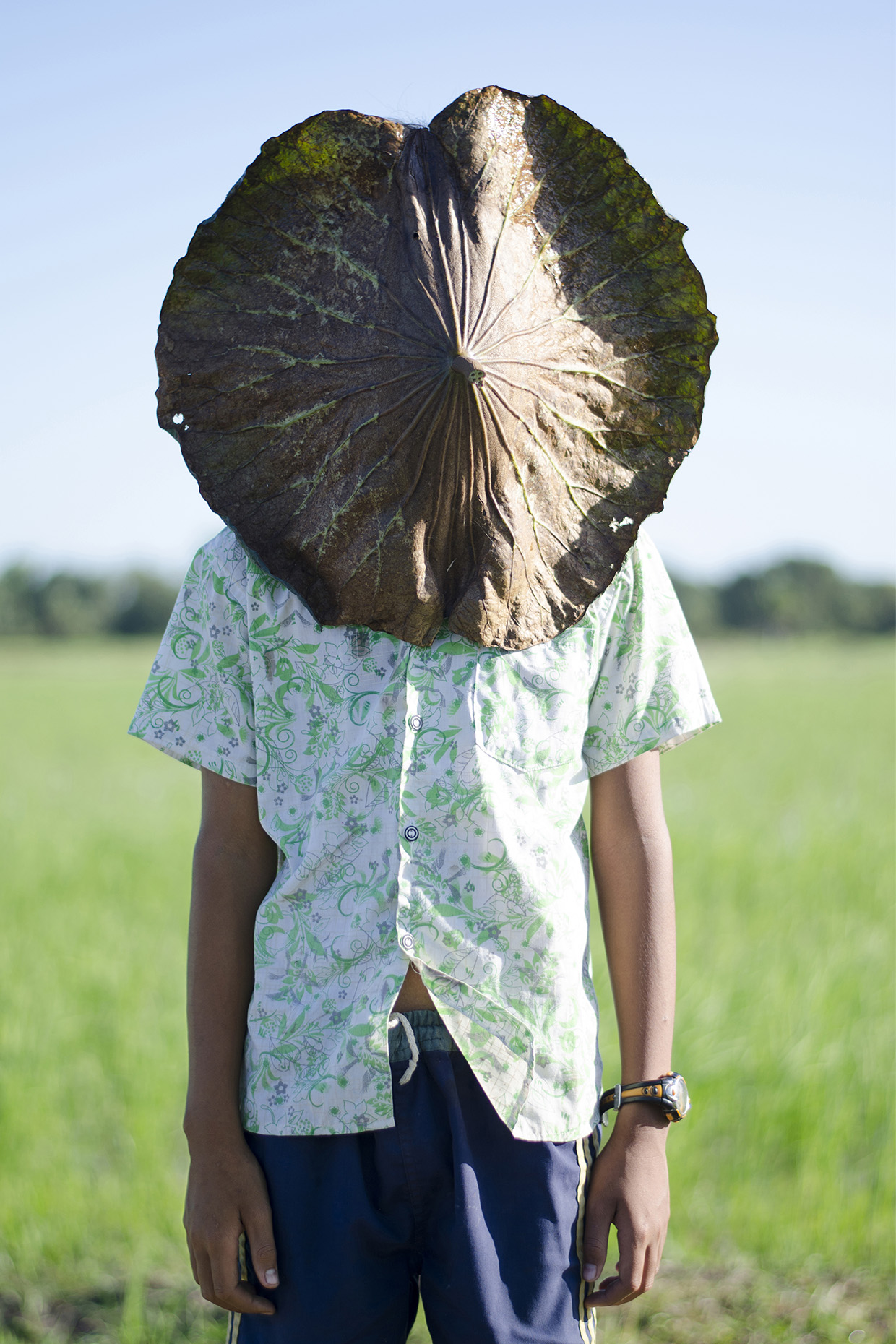
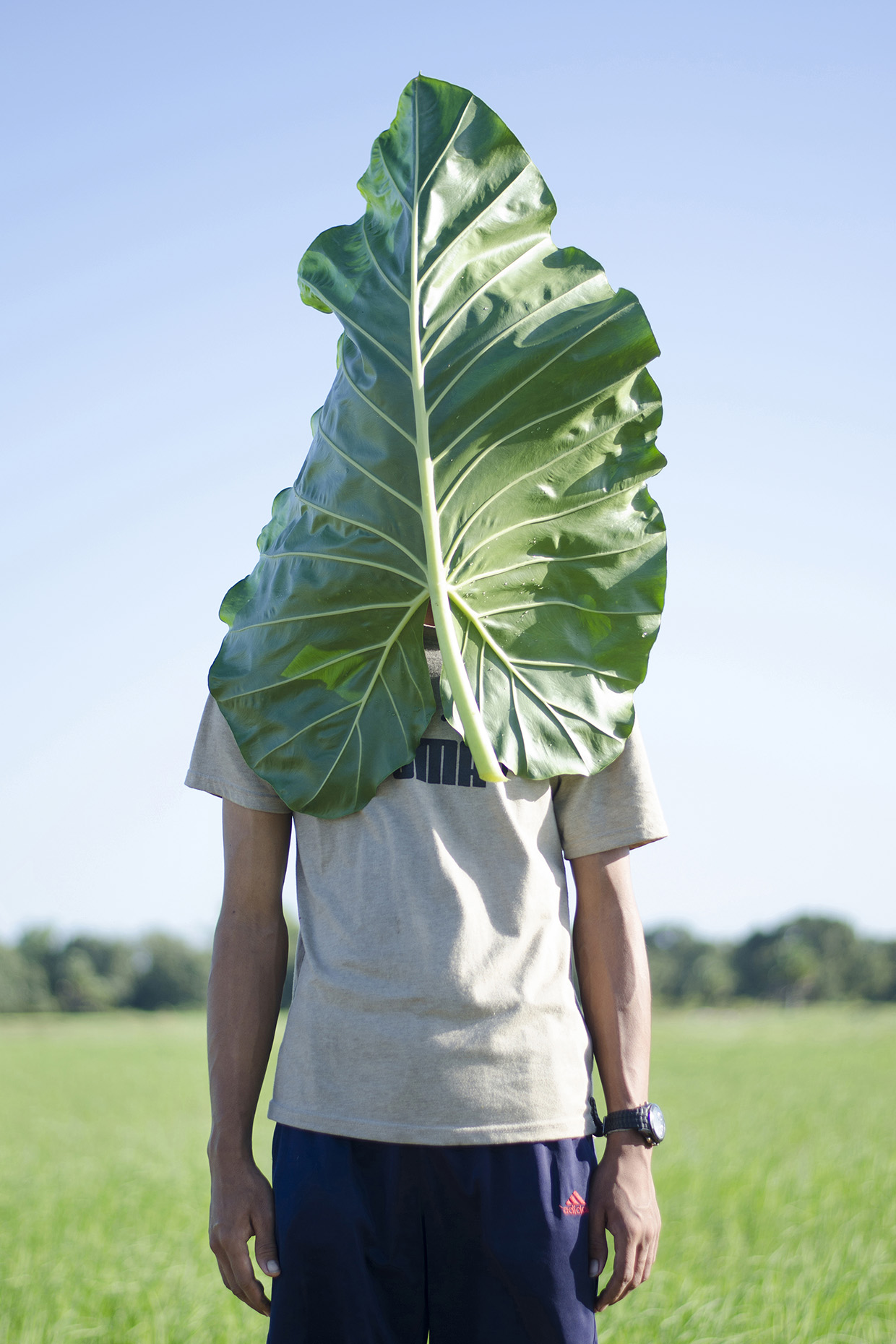
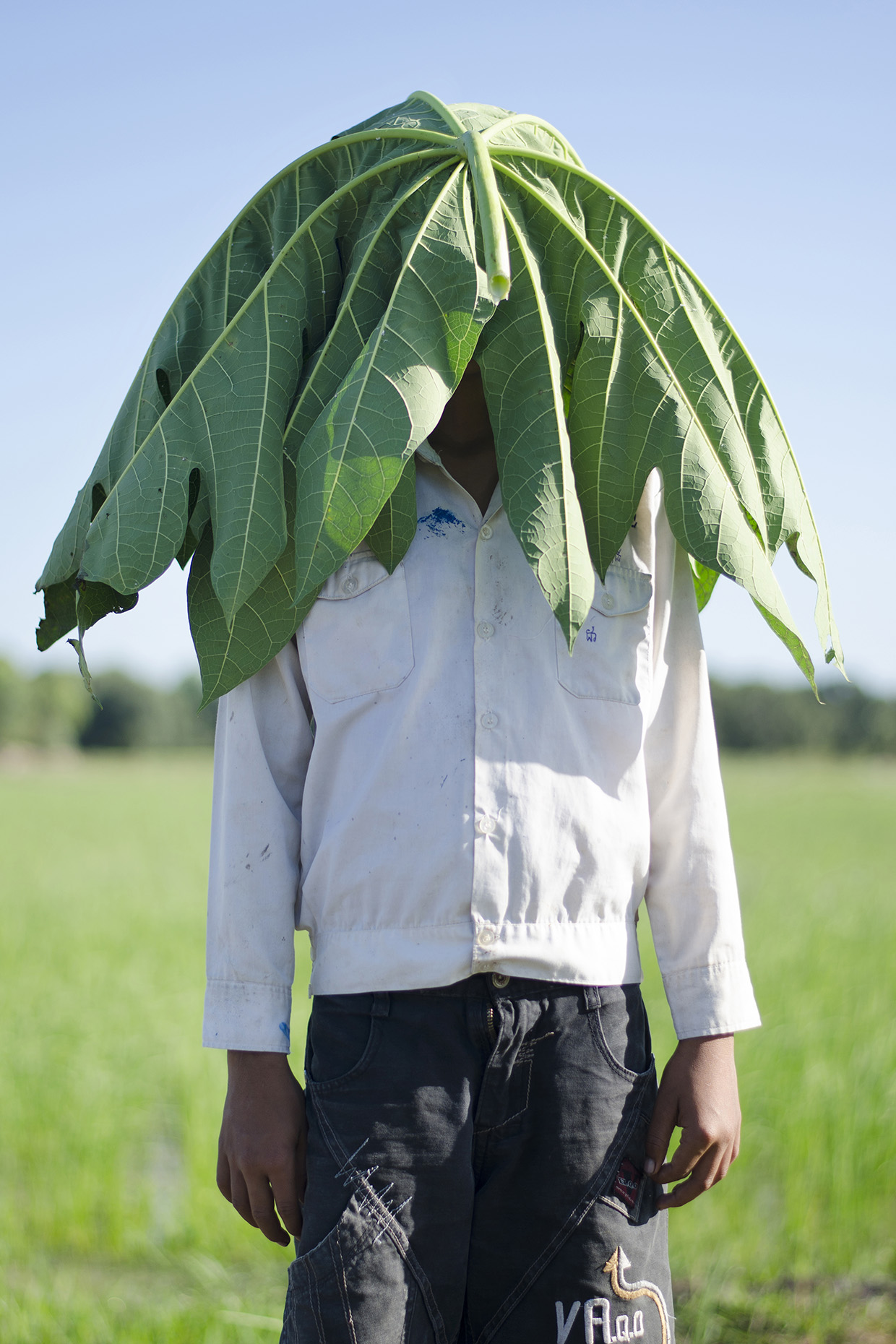

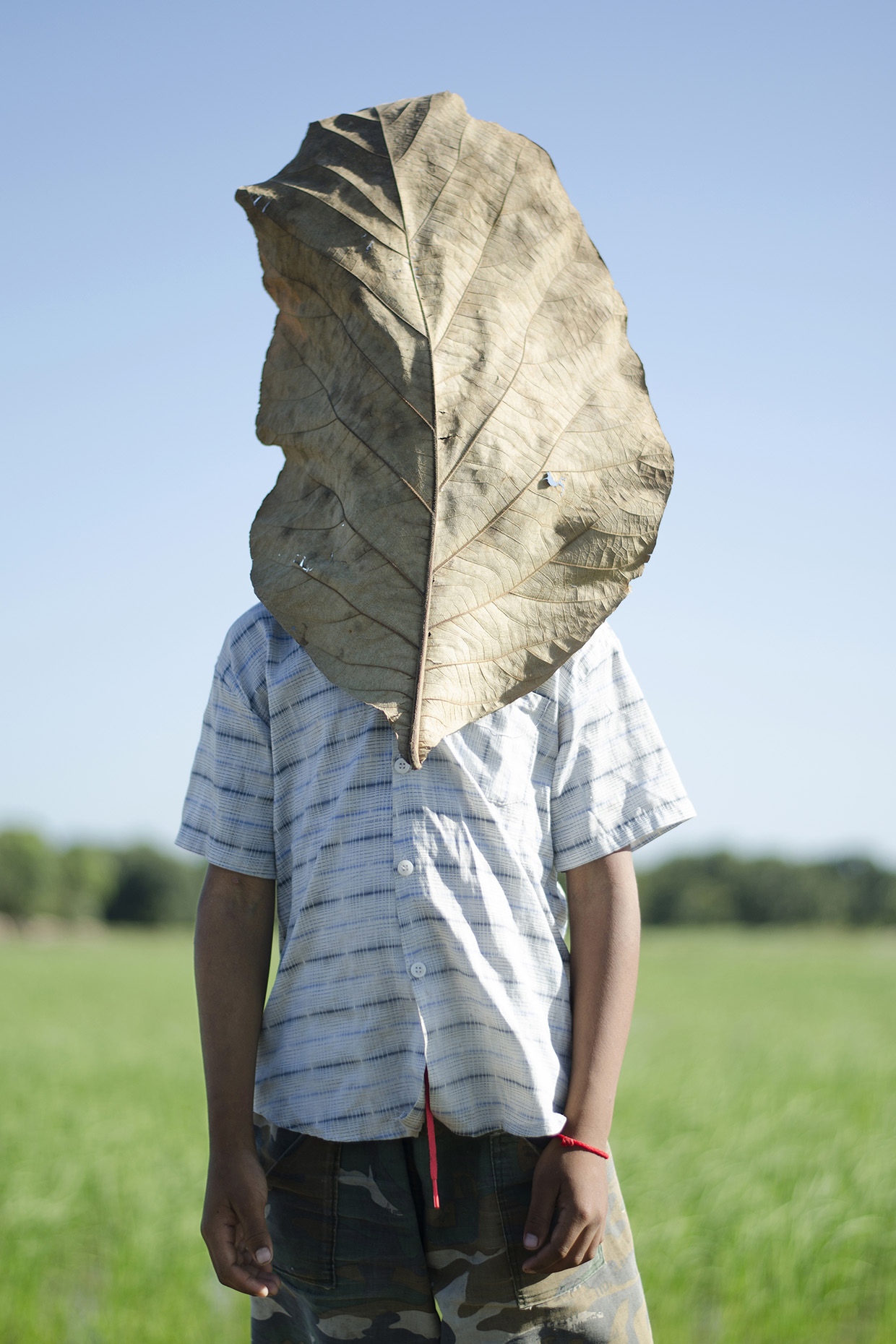
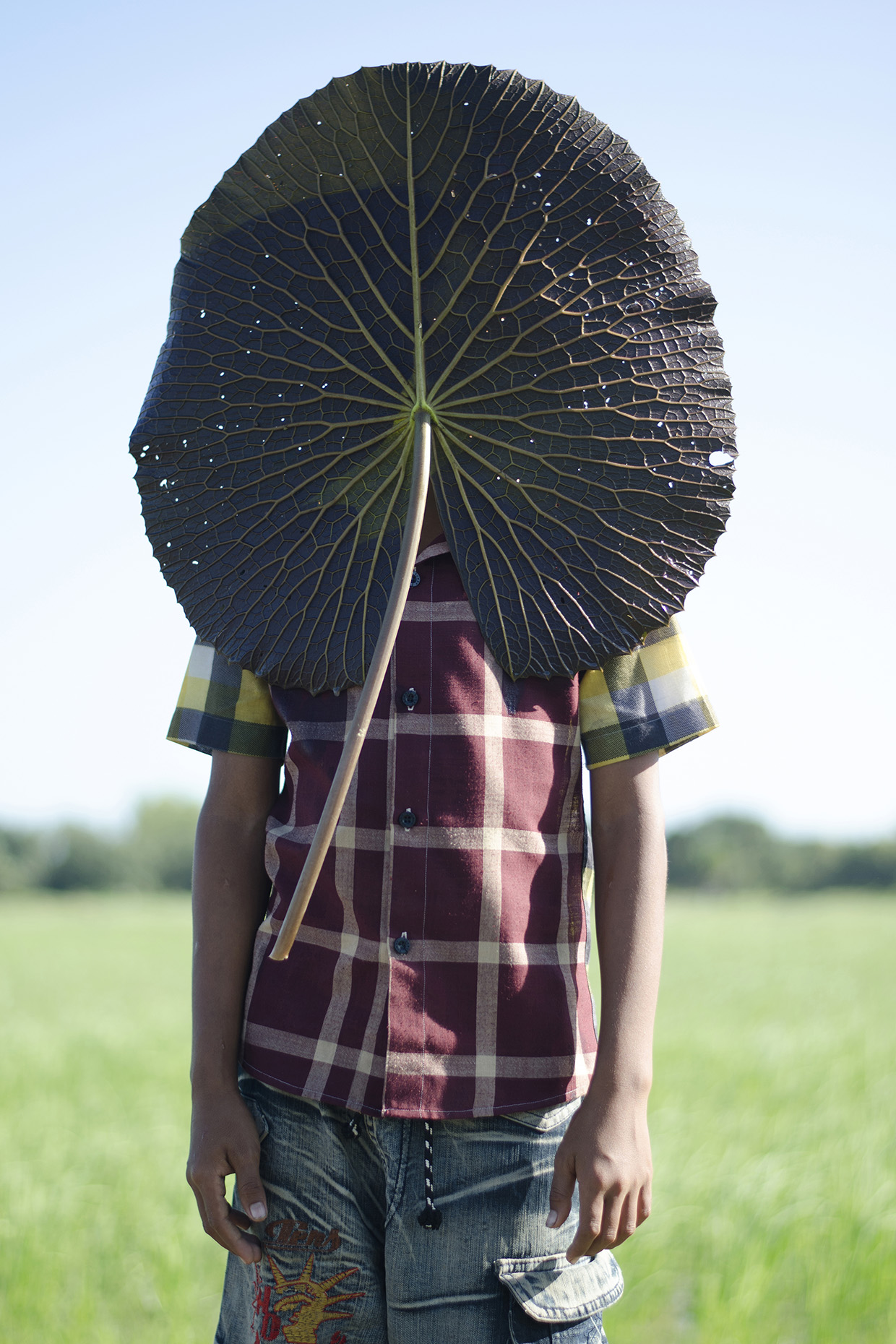
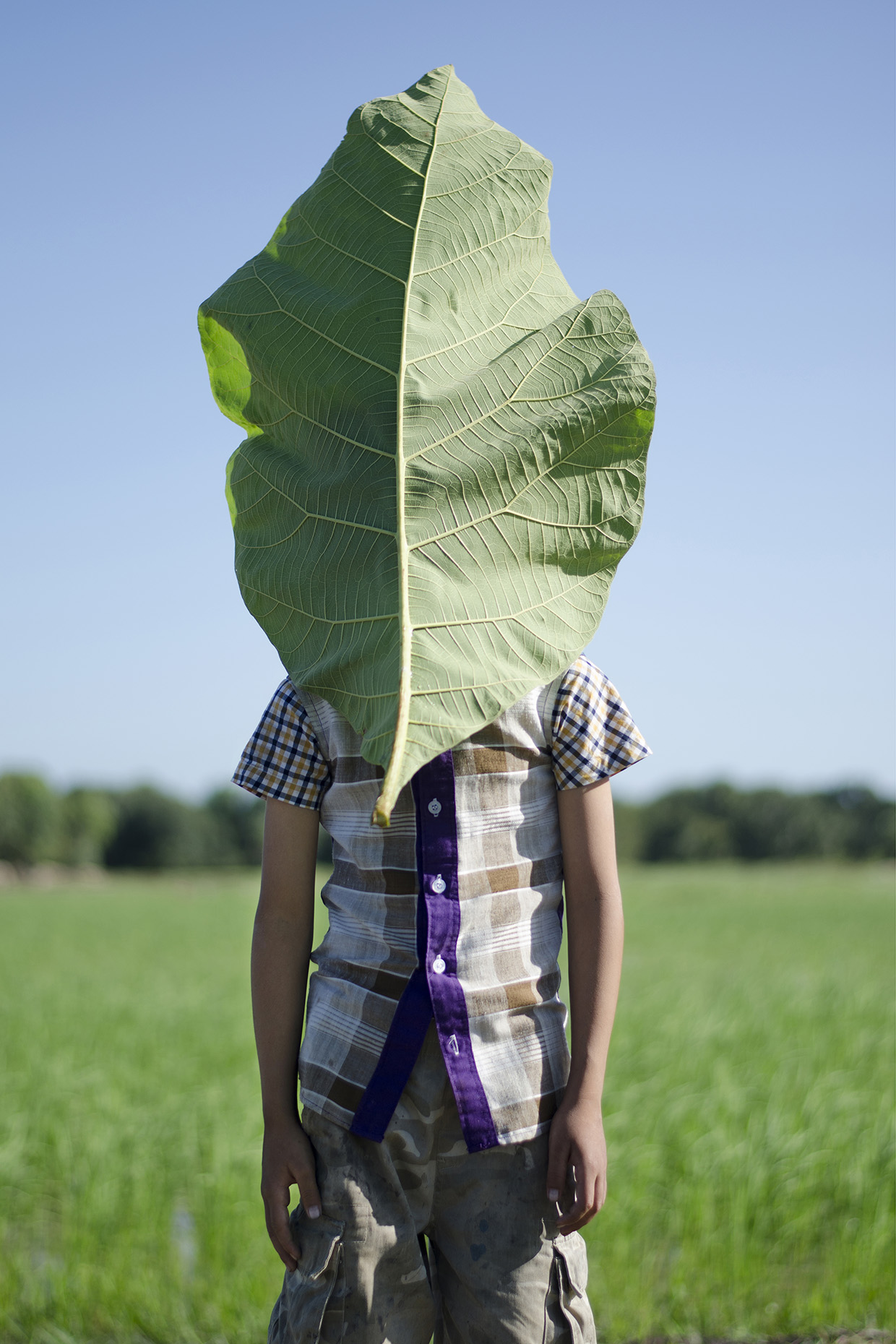
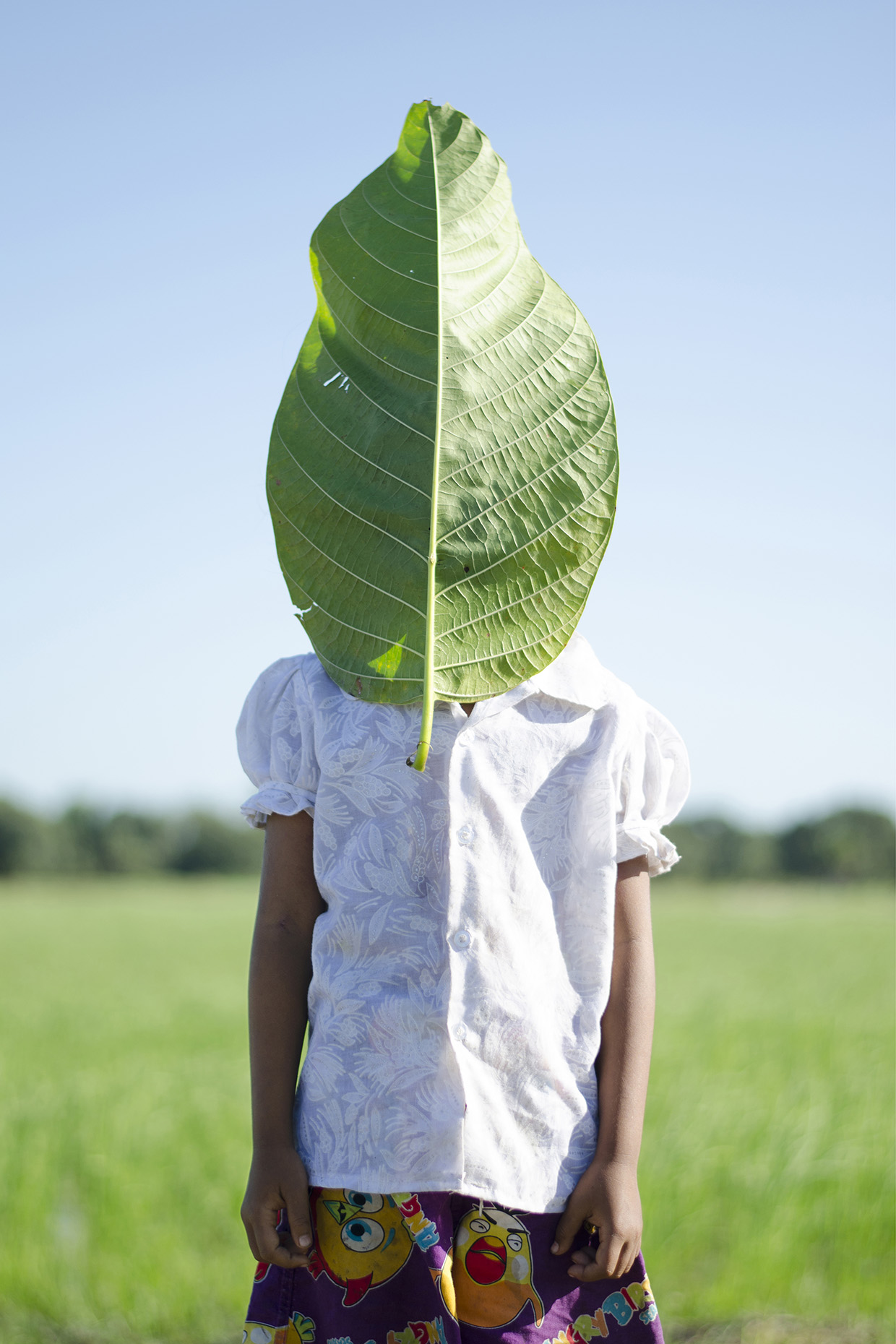
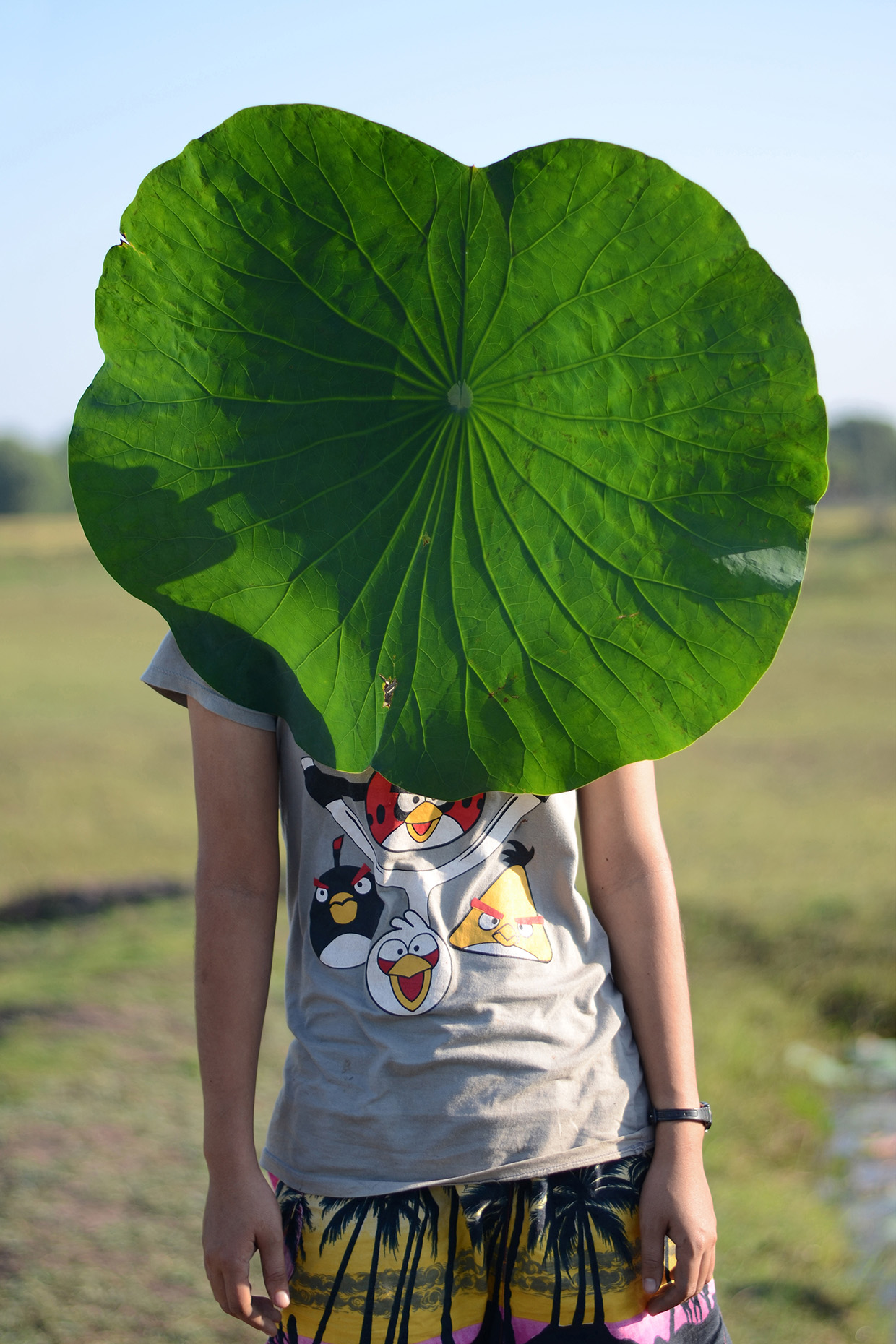
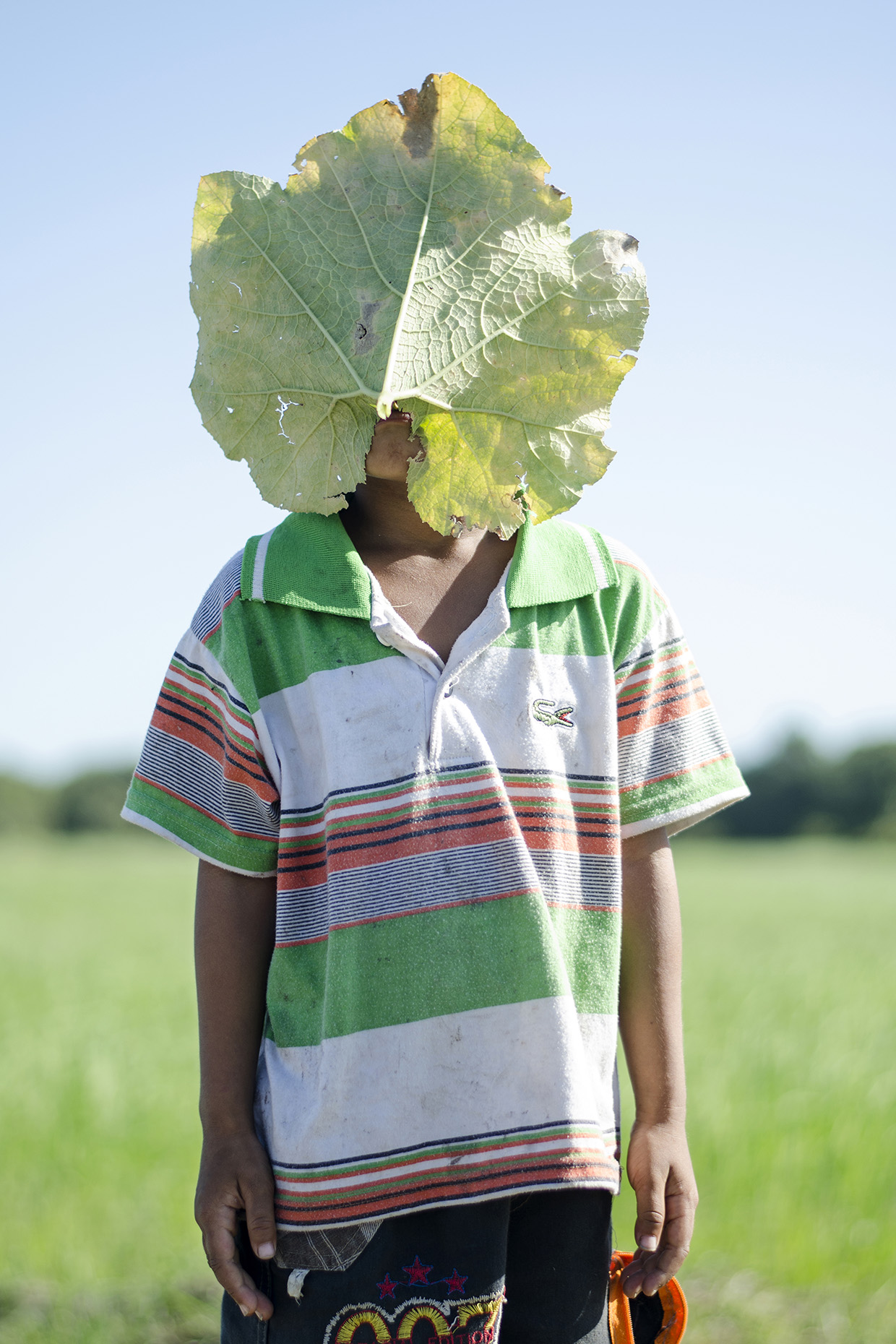
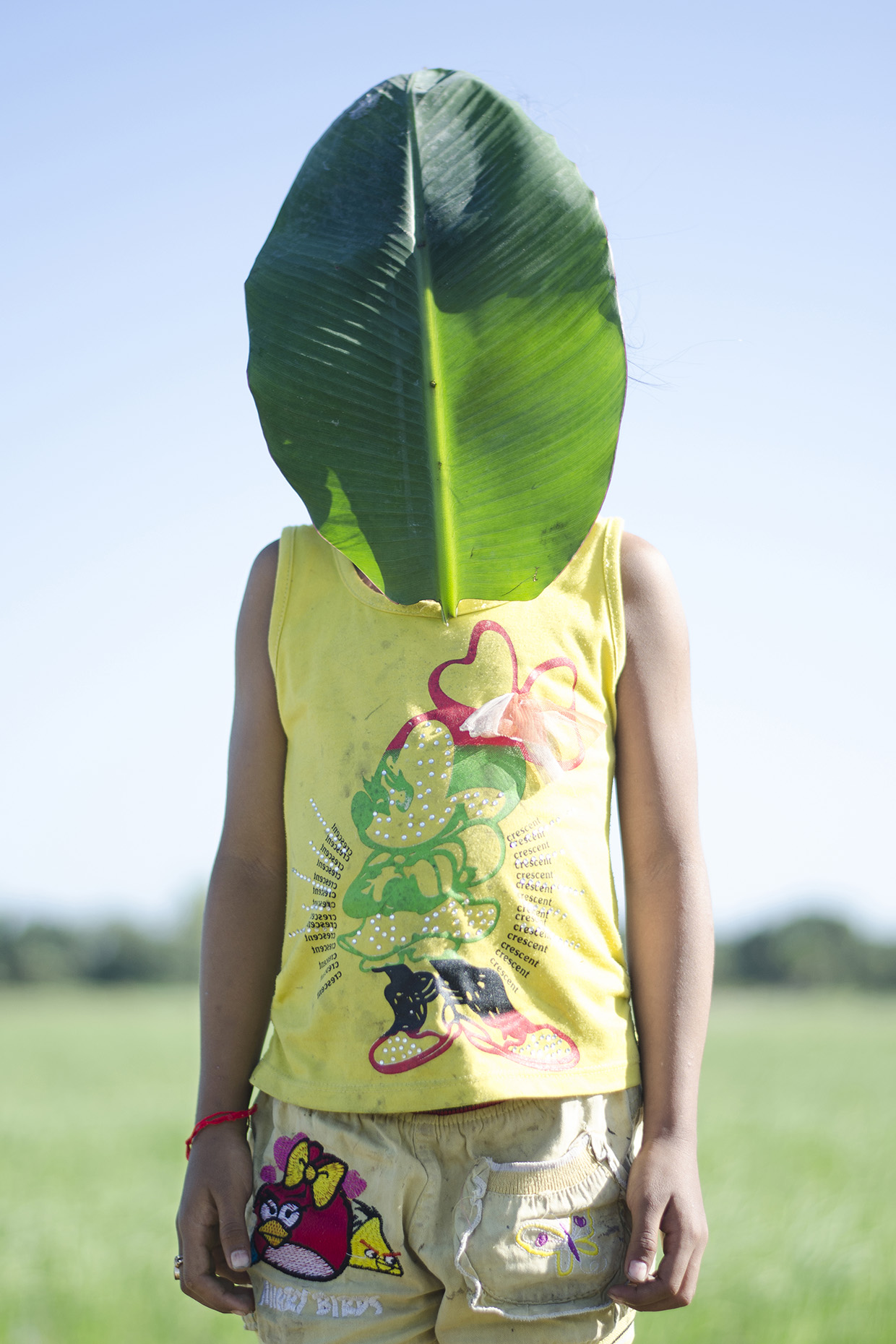
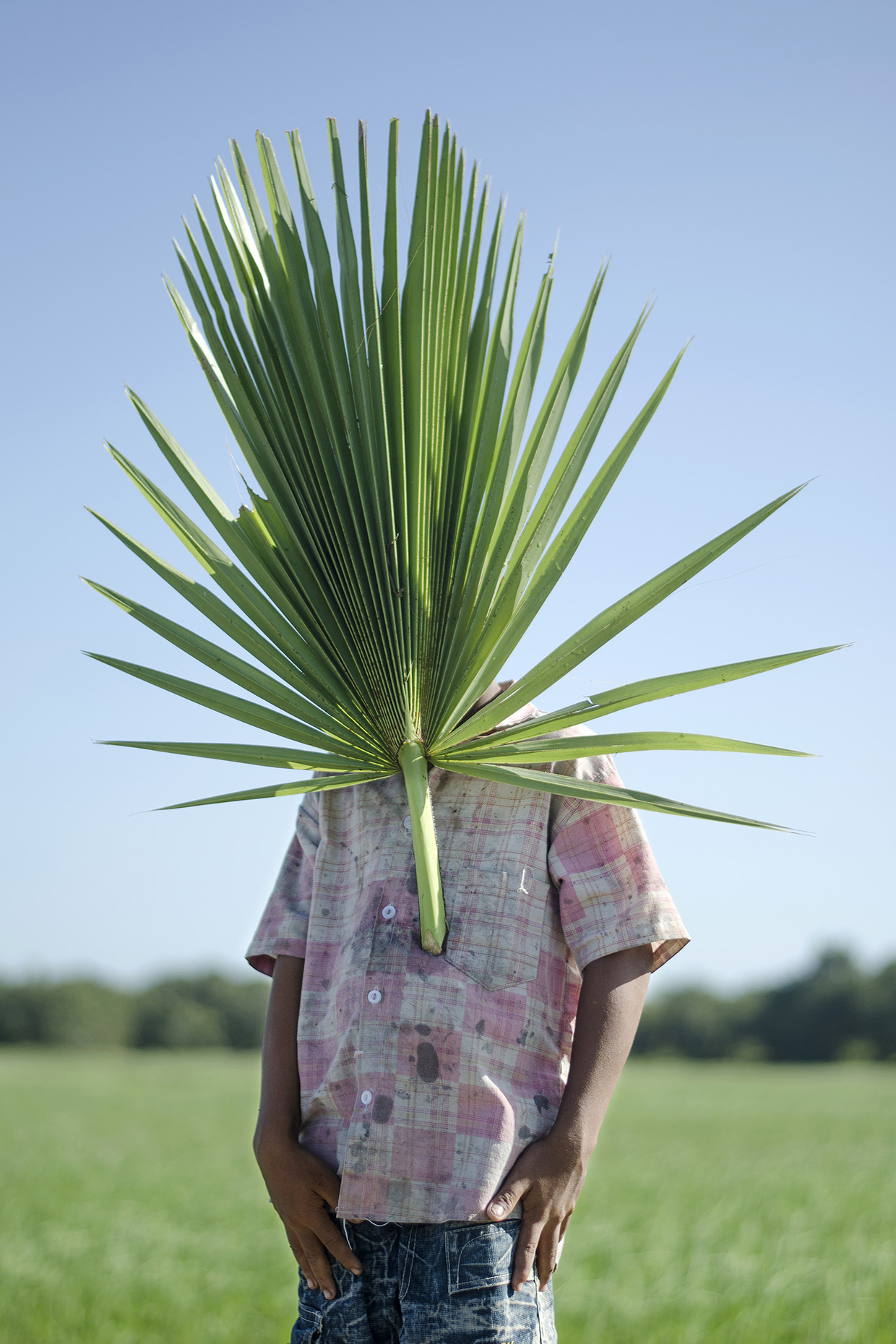
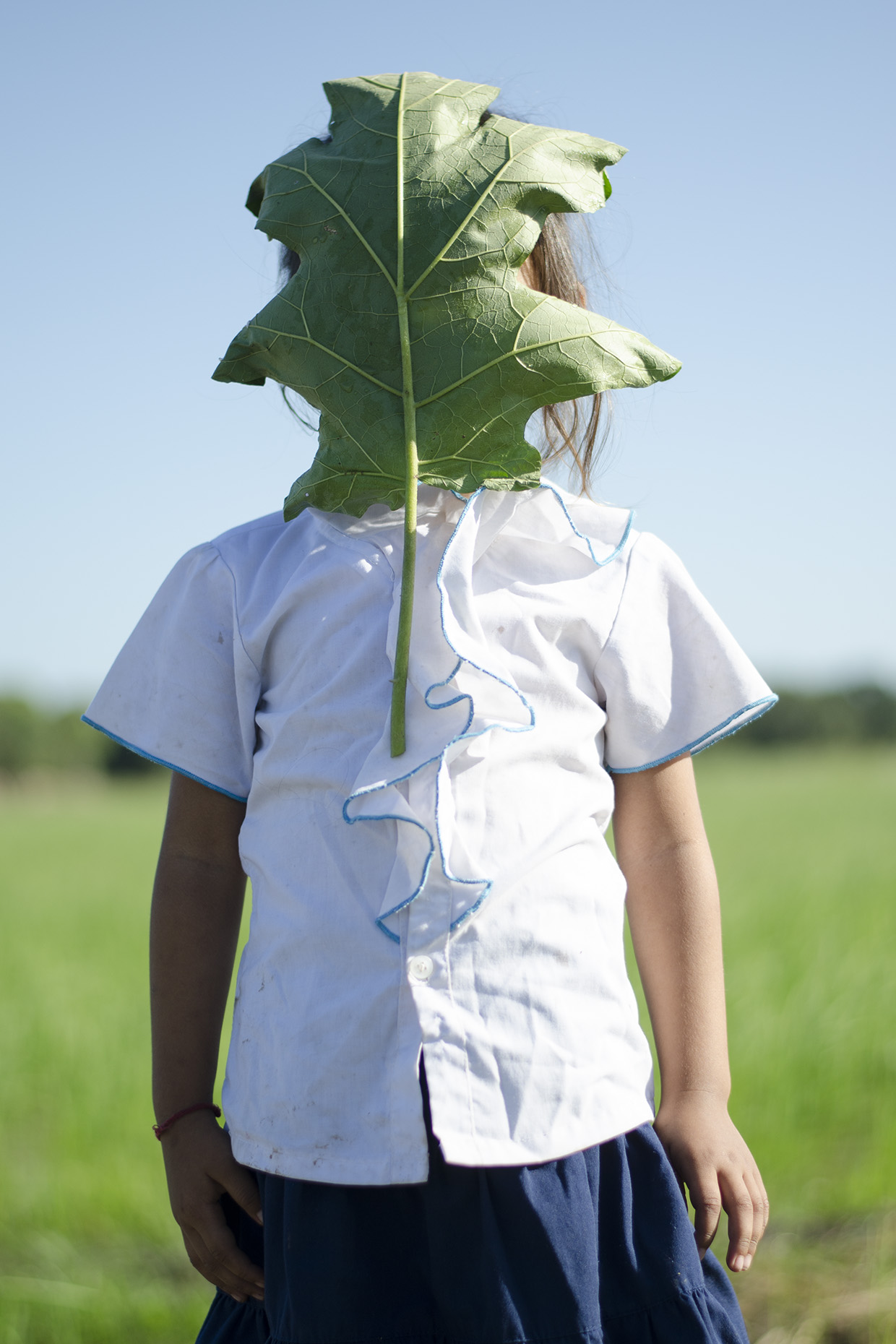
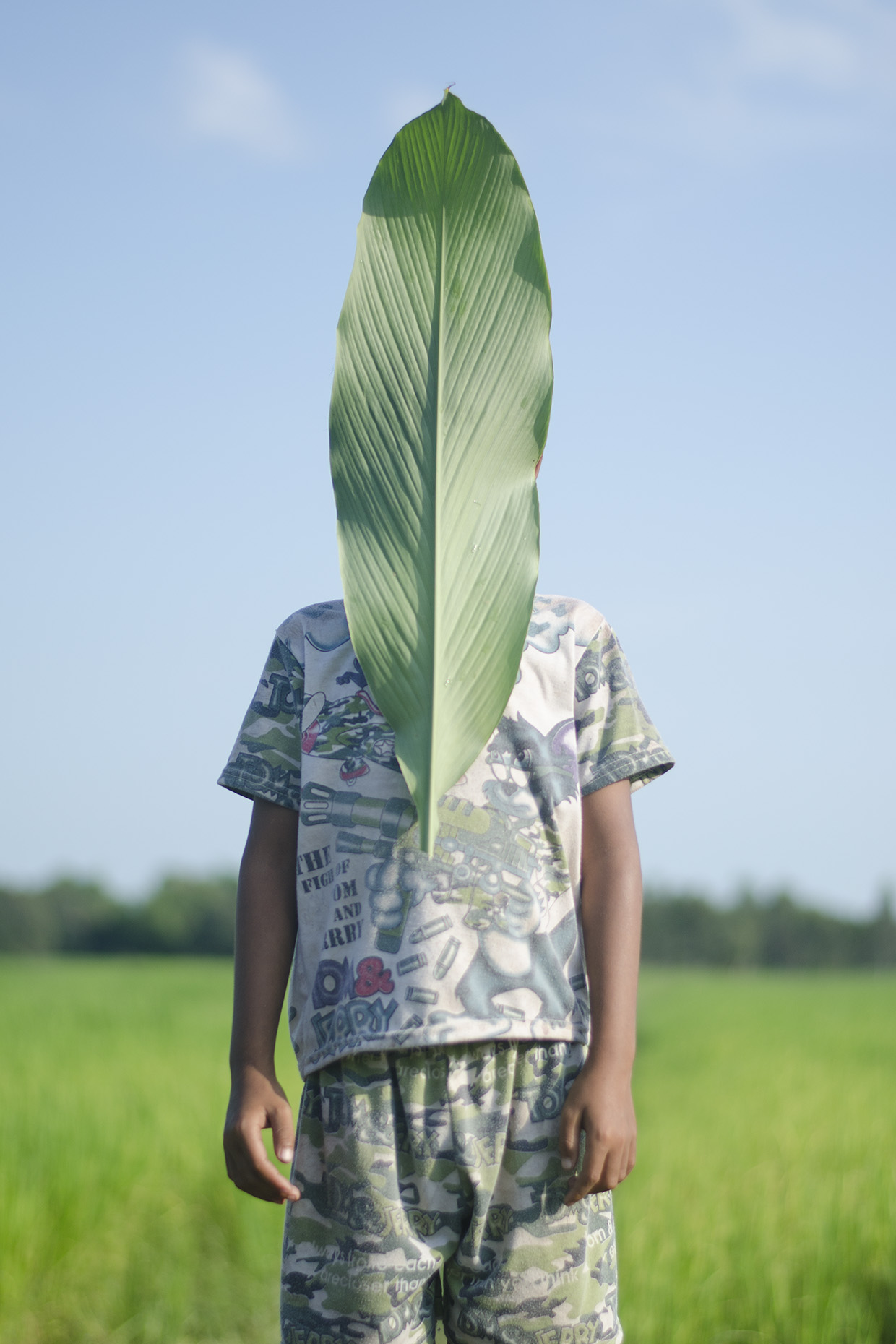
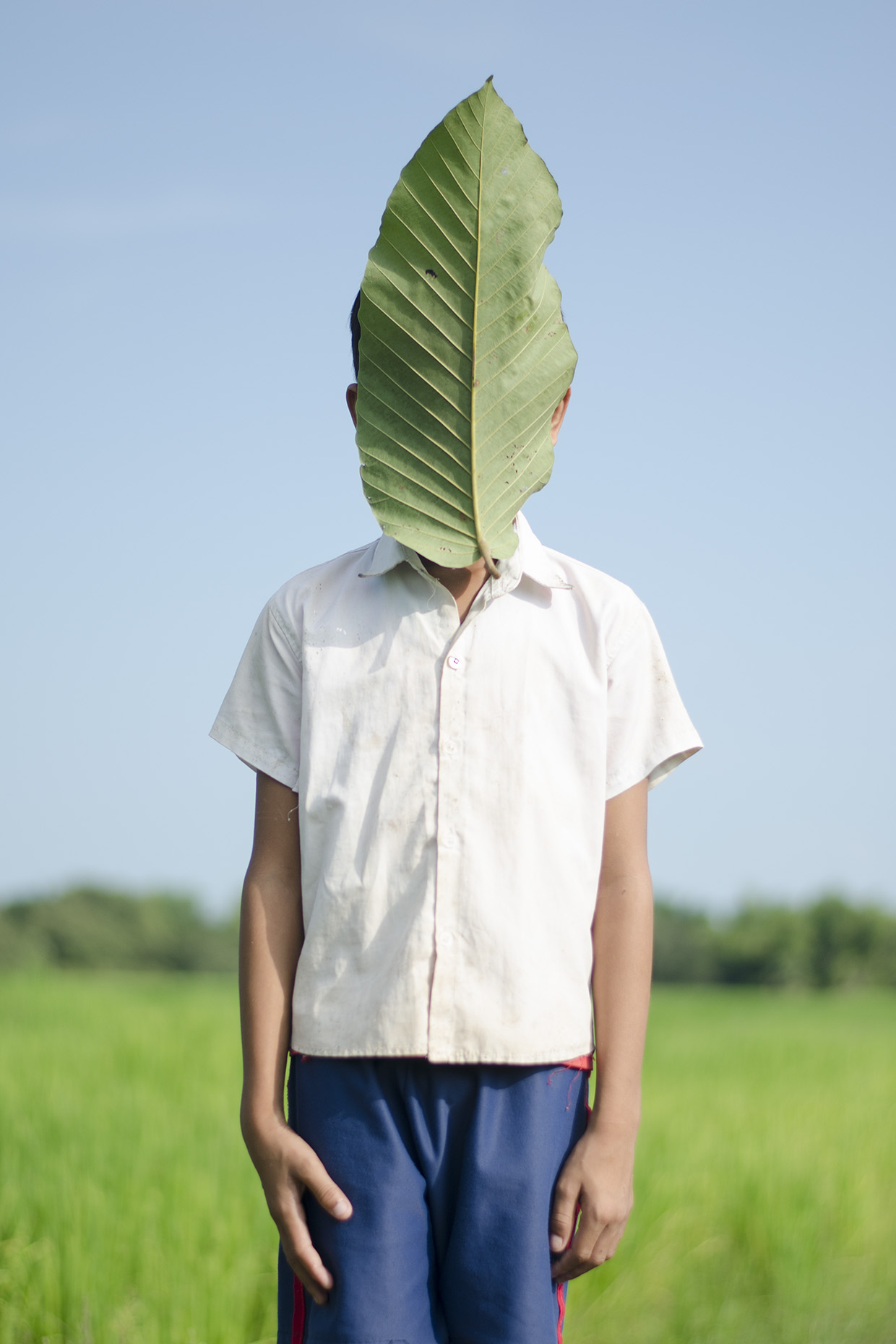
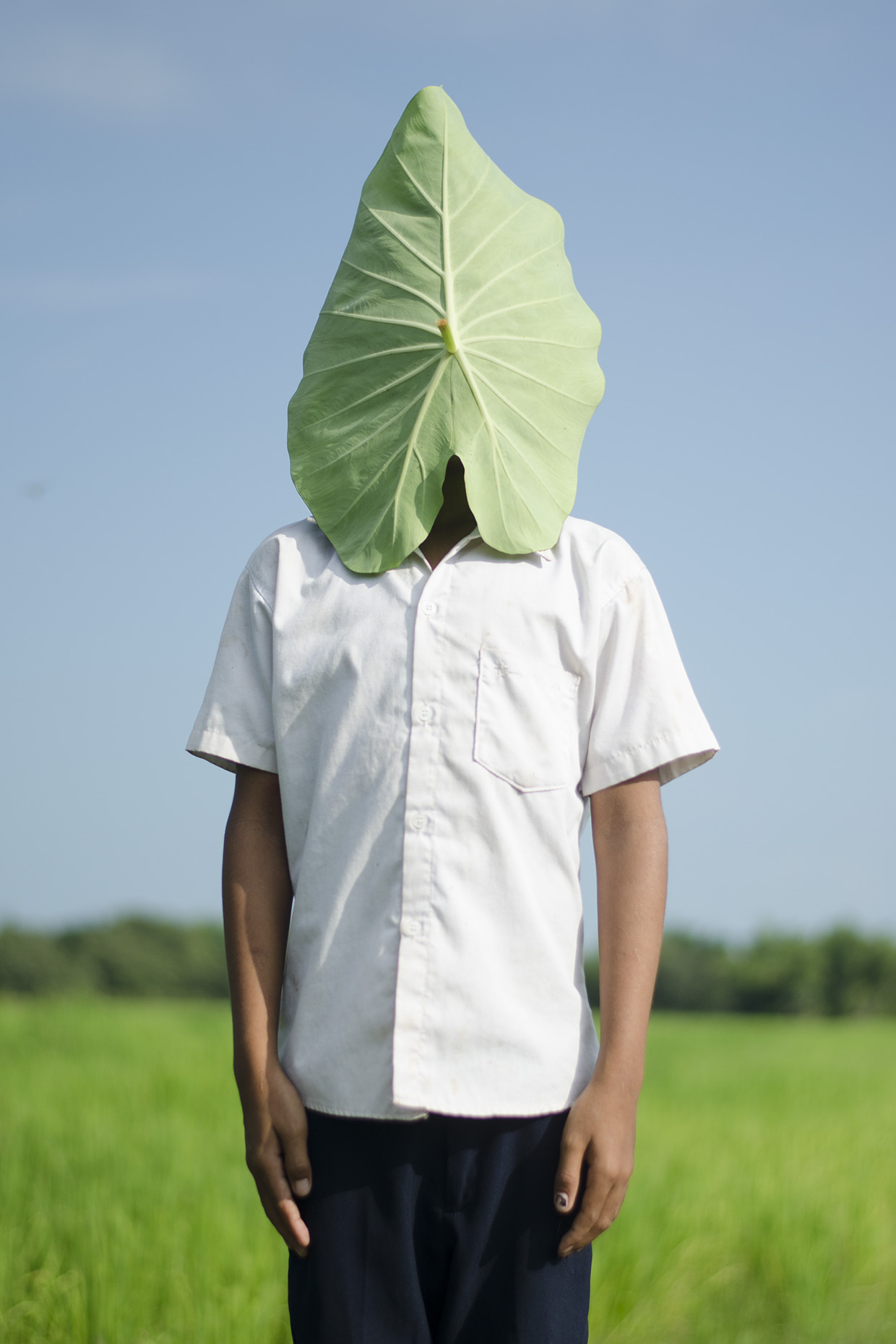
Takeo, 2013
LEAF is a series done in the village of Wat Po, in the province of Takeo, south of the photographer’s home town of Phnom Penh. It shows teenagers, poor countryfolk, who for the most part were unable to continue their education because the school was too far from the rice paddy that provides their work. They seem to be in harmony with nature. They are part of the green landscape, and the clear horizon starkly divides the blue sky from the shades of green that count as faces. We could see in them a homage to nature, a form of pantheism, an affirmation of the need for a living bond between man and nature. For Neak Sophal these “masks” taken from banana trees, sugar palms, water-lilies are first and foremost a negation. And they indicate her sense of anxiety. Since the government pays no attention to them, the country’s youth, who are meant to be its future, must leave their countryside, move to the city, sometimes all the way to Thailand, sell themselves to survive and send money back to their families. They are forlorn. We no longer see them. Sonleuk — “leaves” in Cambodian — become the metaphorical affirmation of their situation. The young are indispensable to the country just as leaves are to a tree. They are its life, the future of life. In a country that is among the most affected by climate change, prey to large-scale deforestation, faced with the massive problems that stem from the innumerable dams on the Mekong River, Sophal’s silent protests stand out for their firm position. First and foremost, she questions the burgeoning, grave inequalities between the countryside that is being abandoned — and where some people are illegally appropriating land — and the cities, which are growing out of control. As Sophal says, “There is no place for these young people in society; that’s why I hide their faces. They can’t clearly see what’s at stake, and society at large now ignores them; it doesn’t even see them anymore.”